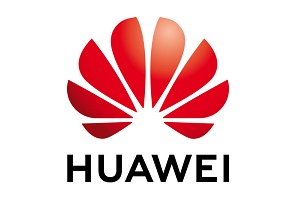Huawei’s activities this year at MWC Shanghai 2023, fell under their theme of “GUIDE to the Intelligent World”. This year, the company’s activities include an experiential tour that takes audiences to multiple cities to learn about their technology and business. This also includes the launch of its new products and solutions for 5GigaGreen, 5G intelligent core networks, Intelligent OptiX Networks, private line + X products, and other intelligent digital transformation solutions.
At these activities, Huawei will also host numerous roundtables and dialogues with global operators, industry partners, and opinion leaders, to explore a variety of topics which include speeding up 5G prosperity, advancing intelligent digital transformation, and striding towards the 5.5G era to realise business, industry, and social value. Huawei says its goal is to create new value for customers and modernise the digital economy through sustained innovation.
Sabrina Meng, Huawei’s rotating chairwoman and CFO, gave a keynote titled “Embracing 5G transformation”. She says, “The digital infrastructure of the future intelligent world will be deeply integrated into every aspect of our lives, industry, and society. It won’t be based on advancements in individual technologies, but rather on incredibly massive, complex systems – the convergence of multiple elements. It’s going to require systems-level thinking and design.”
“When watching a chess game, you can see the big picture. But when you’re playing chess, you focus on the details. Likewise, systematic capabilities to integrate technology and transform management are critical for the future success of 5G. First, let’s talk about integrating different technologies.”
“We can achieve greater synergy across cloud, networks, edge, and devices through systematic design and innovation across domains. When coupled with optimisation across software, hardware, chips, and algorithms, we can address the challenges associated with developing complex solutions for vastly different industrial scenarios.”
“Next, management transformation. Digital and intelligent transformation is not just about technology itself. It’s more about transforming your approach to management. Going digital requires redefining the relationships between people, events, things, and theory, and adopting a more open, forward-looking management approach to address future challenges.”
There are presently over 1.2 billion users of 5G throughout the globe, and operators who acted swiftly to create 5G are already reaping the benefits of the initial wave of advantages offered by 5G. This is because emerging applications in a variety of areas are setting high standards for what is required from a network.
In the consumer market, new services such as New Calling, cloud phones, and glasses-free 3D require higher data transfer rates and lower latencies. In the industrial market, on the other hand, the RedCap (reduced capability) ecosystem has matured, the passive IoT market is expanding, and the Internet of Vehicles (IoV) requires faster uplink speeds.
It is anticipated that these applications covering all possible outcomes will result in 100 billion connections. It is anticipated that the introduction of these new service models would prompt an industry upgrade, which will result in a second wave of advantages.
It has been four years since the introduction of commercial 5G services, and since then, the technology has been implemented in more than 17,000 private-network projects all over the world. The amount of money made by 5G private networks as well as the total number of industrial connections has increased by a factor of three. Additionally, many operators have used the [CNY10 billion (€1.27 billion)] in income received from 5GtoB (5G-to-business) private networks to promote an increase of [CNY100 billion (€12.66 billion)] in DICT (data, information and communications technology) revenue from cloud, data storage, and platform services. 5GtoB App Engine is an application innovation centre, where application developers and system integrators can access operators’ 5G network capabilities.
This has been accomplished by leveraging the revenue earned from 5GtoB private networks. Although the majority of 5G-to-business services were initially tested in China, they have subsequently been rolled out in other regions of the world and are now being offered for sale in the Asia-Pacific region, Europe, the Middle East, and Africa respectively. These services enable intelligent digital transformation in industries such as manufacturing, ports, mines, oil fields, and healthcare, allowing customers in those sectors to cut costs and enhance efficiencies while also enabling intelligent digital transformation.
5.5G is also approaching for the communications industry. 5.5G technologies are expected to improve network capabilities 10-fold and create 100 times more business opportunities for operators. At this year’s MWC Shanghai, Huawei is showcasing four of the major features of 5.5G – 10 Gbit/s downlink, 1 Gbit/s uplink, 100 billion connections, and native AI. It is also exploring the five connectivity areas expected to go mainstream with 5.5G – connectivity for people, for things, for vehicles, for industries, and for homes.
Huawei has already started helping a number of operators around the world begin commercial verification of 5.5G. The 5.5G industry will continue growing as the initial release of 5.5G standards is expected to be frozen in the first half of 2024 and related technologies have already been verified.
MWC Shanghai 2023 runs from June 28 to June 30 in Shanghai, China. Huawei will showcase its products and solutions at stands E10 and E50 in Hall N1 of Shanghai New International Expo Centre (SNIEC). Together with global operators and industry professionals, we dive into topics such as speeding up 5G prosperity, striding towards the 5.5G era, and intelligent digital transformation. 5.5G creates new business value in areas like connecting people, Internet of Things (IoT), and Internet of Vehicles (IoV), supporting countless industries as they move towards an intelligent world. For more information, please visit Huawei.
Comment on this article below or via Twitter: @VanillaPlus OR @jcvplus






